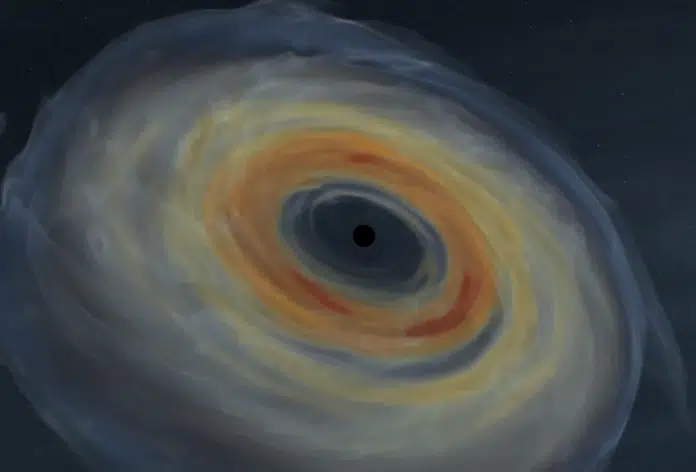
By Amit Malewar 23 Aug, 2024
Collected at: https://www.techexplorist.com/collapsing-stars-new-source-detectable-gravitational-wave/87814/
After the death of a massive, spinning star, the ripples generated in spacetime could shake the universe. These ripples, called gravitational waves, are 15 to 20 times the mass of the sun.
A new study suggests that instruments on Earth could feel these gravitational waves. What’s more, scientists have been waiting for a long time to find these new sources.
After running out of fuel, the star explodes. This event is known as collapse, and it leaves a black hole with a large disk of leftover material behind. The material orbiting around the black hole distorts the surrounding space, producing gravitational waves that travel across the universe.
Thanks to advanced simulations that scientists created, the team was able to determine that these gravitational waves could be detectable with instruments like the LIGO. Well, that was in simulation, but if spotted real, the collapsar-driven waves would help scientists understand the mysterious inner workings of collapsars and black holes.
The known gravitational wave sources are the mergers of neutron stars or black holes.
Study lead Ore Gottlieb, a research fellow at the Institute’s Center for Computational Astrophysics (CCA) in New York” City, said, “One of the most interesting questions in the field is: What are the potential non-merger sources that could produce gravitational waves that we can detect with current facilities? One promising answer is now “collapsars.”
In the simulation, scientists replicated the conditions — including magnetic fields and cooling rates — in the aftermath of a massistar’s star’s collapse. The simulation showed that the collapse could generate powerful gravitational waves that are visible from about 50 million light-years away.
This distance is less than one-tenth the detectable range of the more powerful gravitational waves from mergers of black holes or neutron star, though it’s still stronger than any non-merger event yet simulated.
Until now, scientists believed that such waves would be difficult to detect in the universe’s background noise. On the contrary, gravitational waves from the merger of two objects create clear, strong signals, like an orchestra playing together.
This is because two compact objects dance in a tight orbit that generates gravitational waves at each turn when they are close to joining. This pattern of almost exact waves amplifies the signal to a detectable level. The new simulations demonstrated that similar to the orbiting compact objects in mergers, the revolving disks around collapsars are also capable of emitting gravitational waves that magnify col “actively.
“I thought the signal would be much messier because the disk is a continuous gas distribution with material spinning in different orbits. We found that the gravitational waves from these disks are emitted and called “her strong.”
The new work calculated gravitational wave signatures for many potential collapsar events. Stars, however, span a wide range of mass and rotation profiles, which would create differences in the calculated gravitational wave signals.
Got, “Lieb says, “In principle, we would ideally simulate 1 million collapsars to be able to create a generic template, but unfortunately, these are costly simulations. So, for now, we have to pick other” strategies.”
Detecting collapsar-generated gravitational waves would help scientists better understand the inner structure of the star upon collapse and would also enable them to learn about the properties of black holes — two topics that remain poorly u” derstood.
“These are things that we can otherwise “not detect,” Got” Lieb says. “The only way for us to study these inner stellar regions around the black hole is through gravitational waves.”
Journal Reference:
- simoOre Gottlieb, Amir Levinson and Yuri Levin. Cooled Collapsar Disks. The Astrophysical Journal Letters. DOI 10.3847/2041-8213/ad697c

Leave a Reply